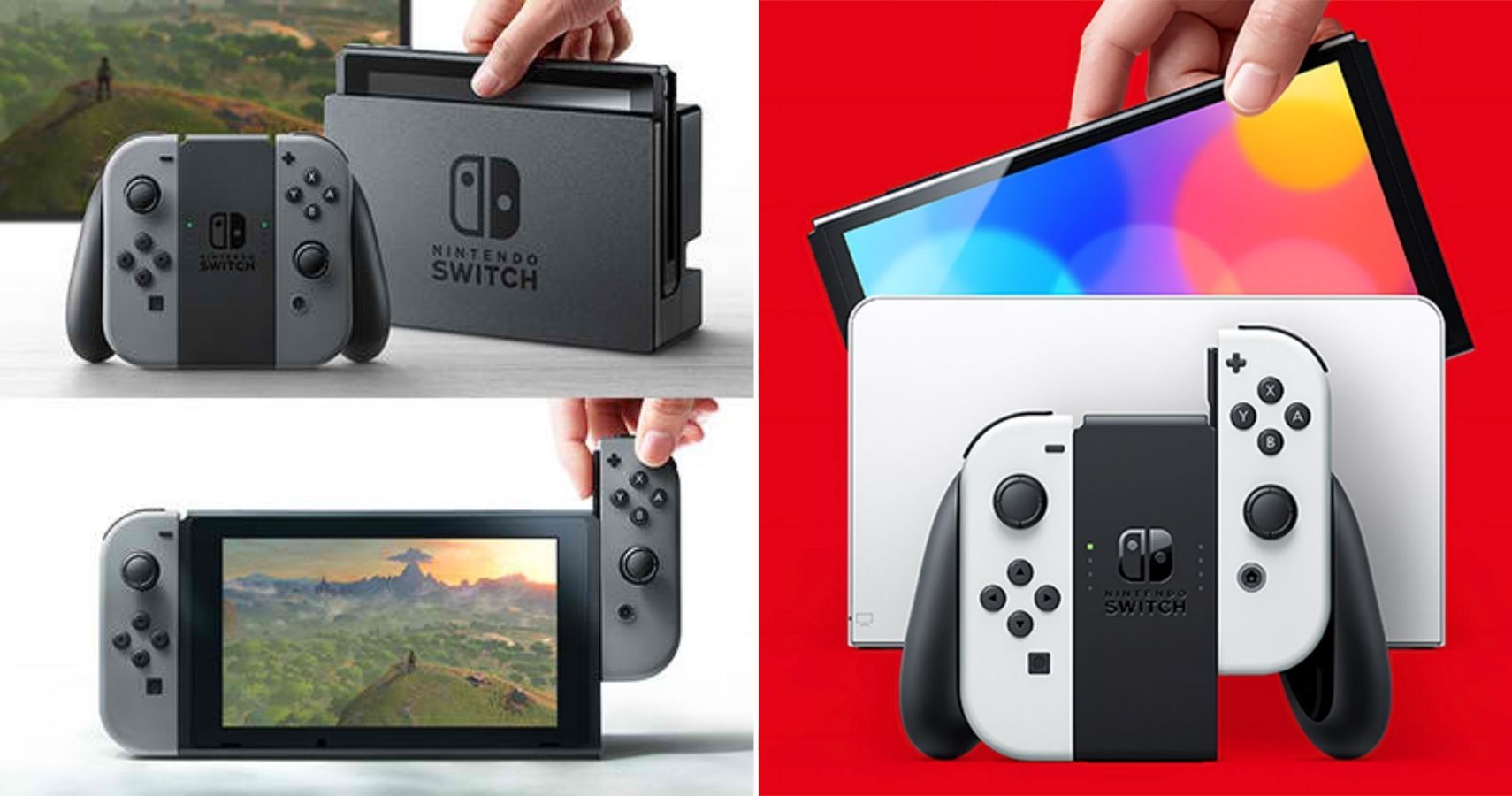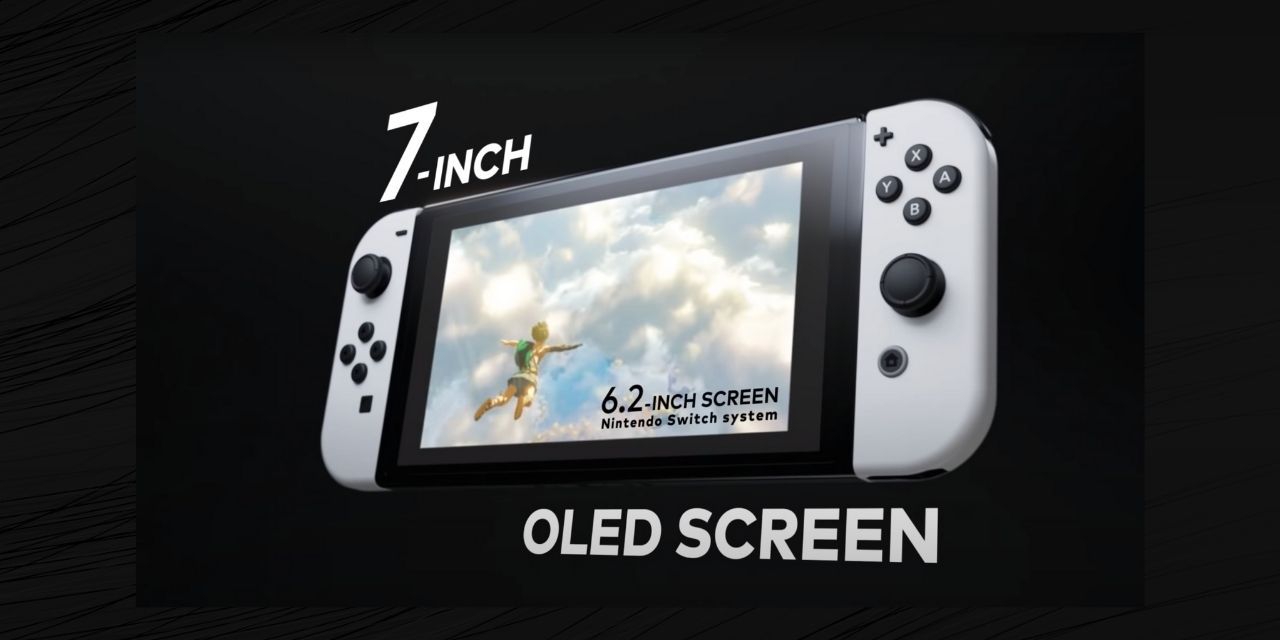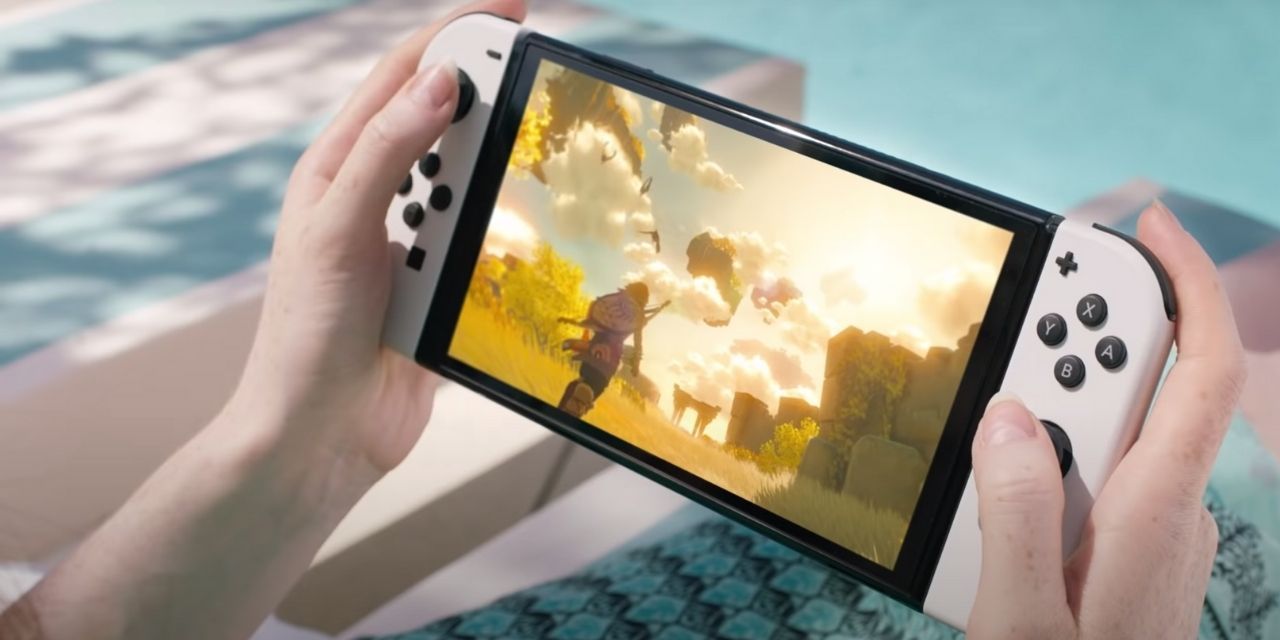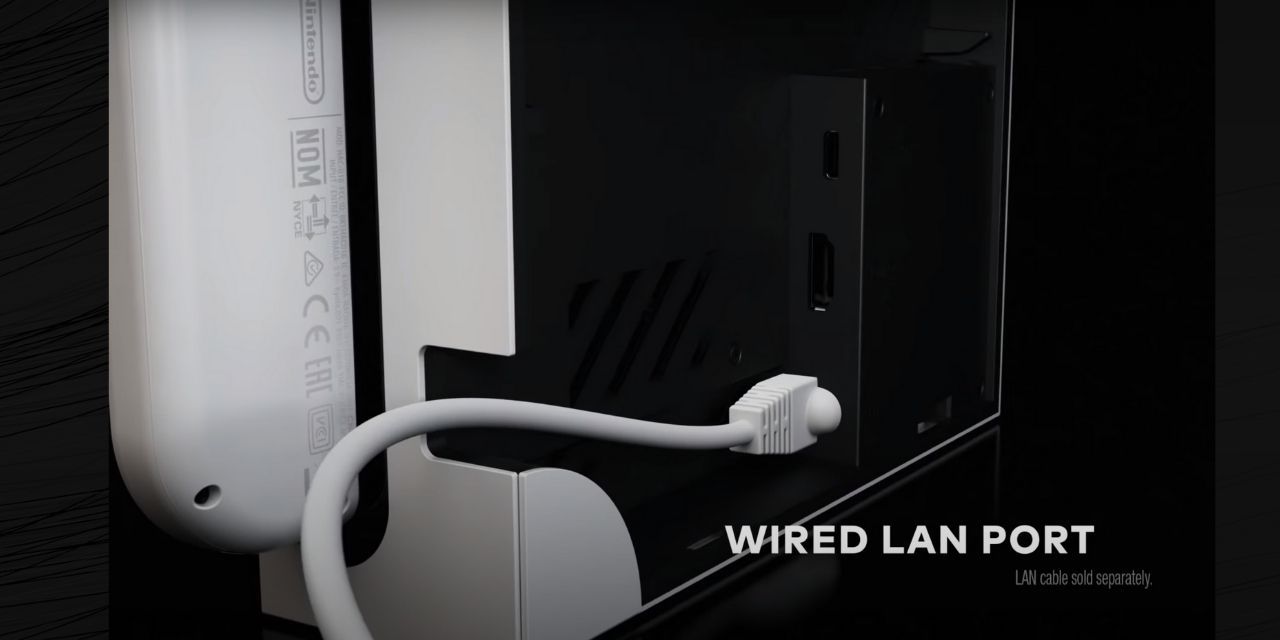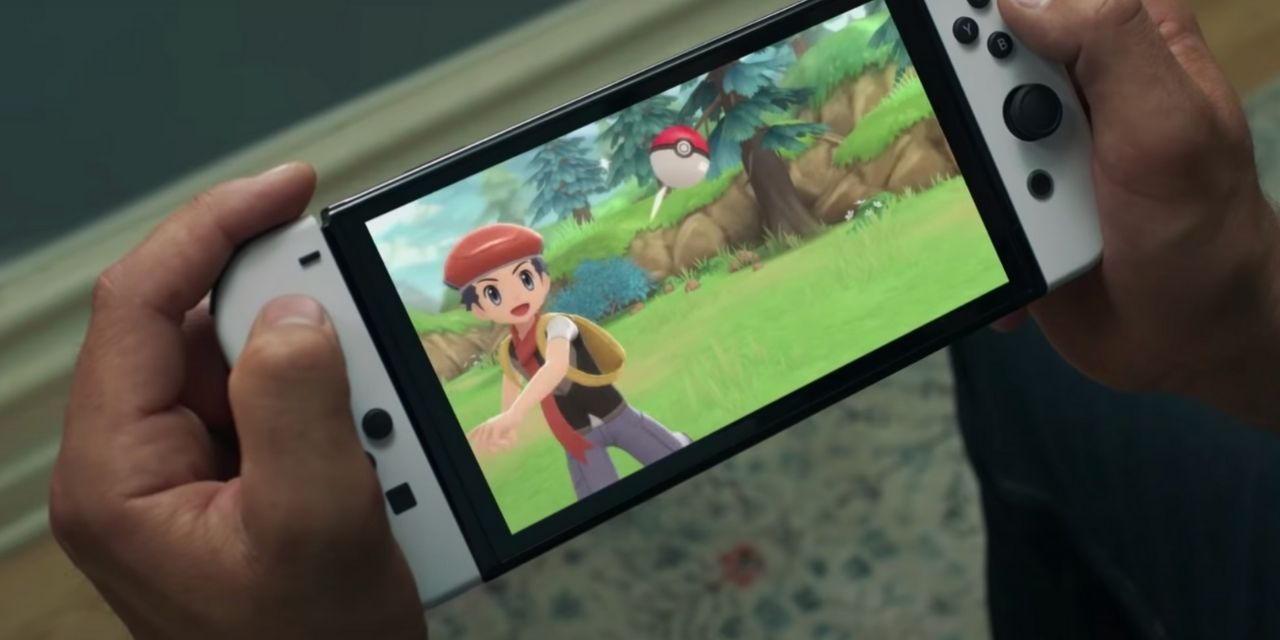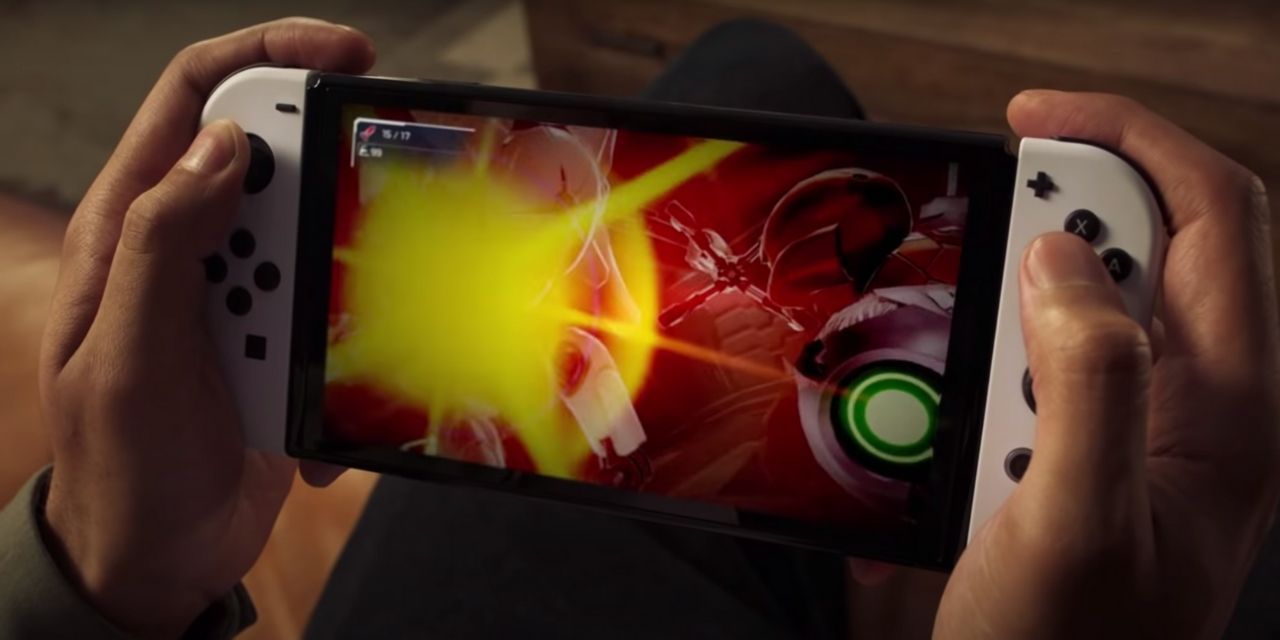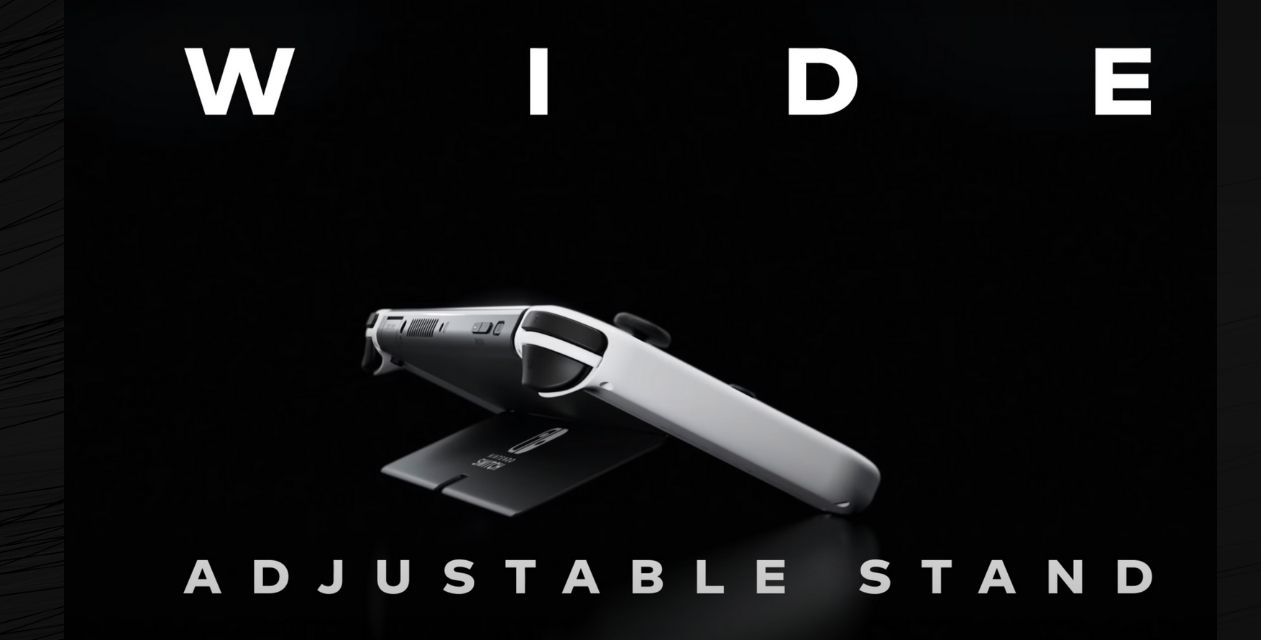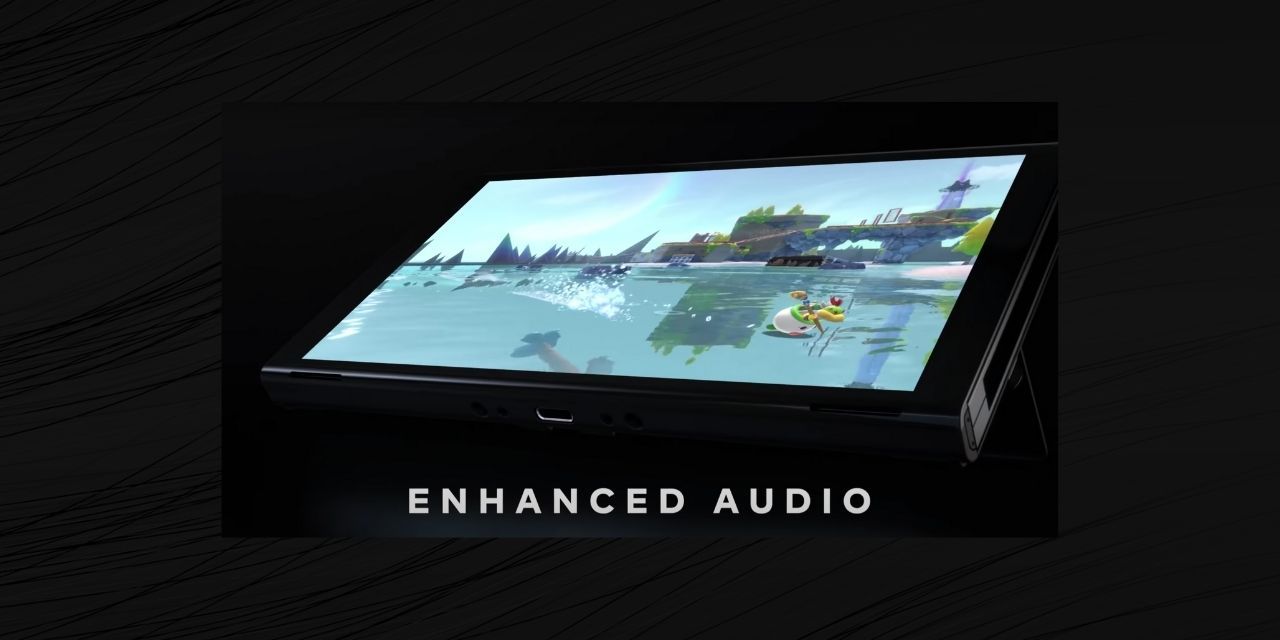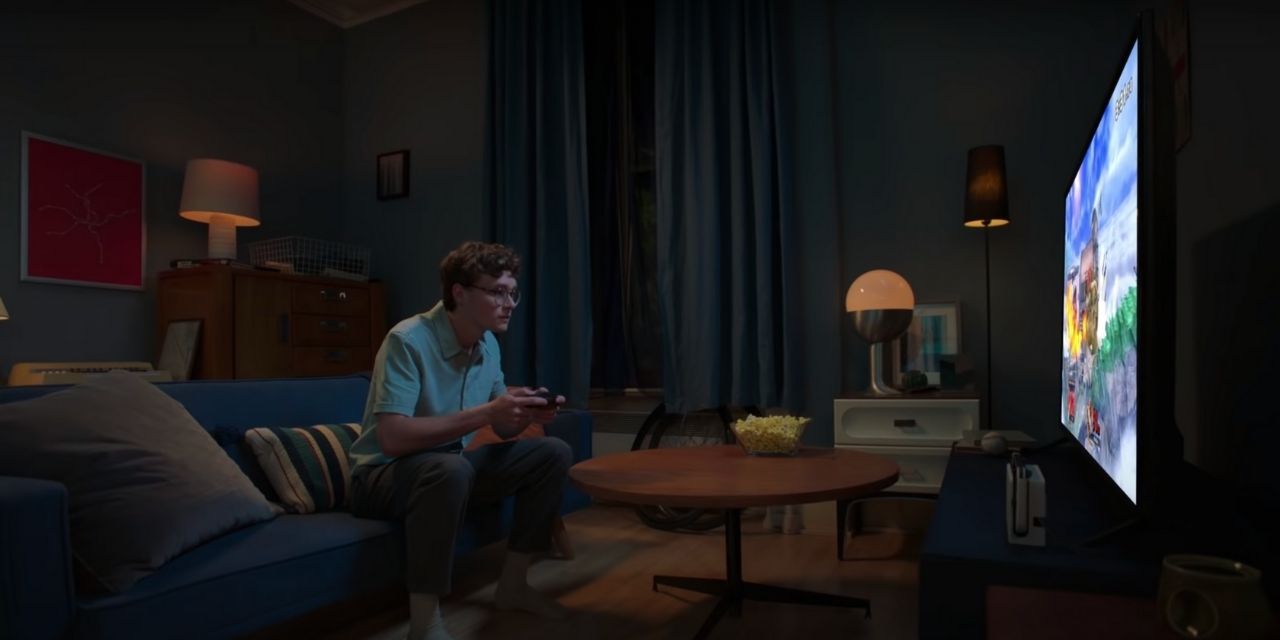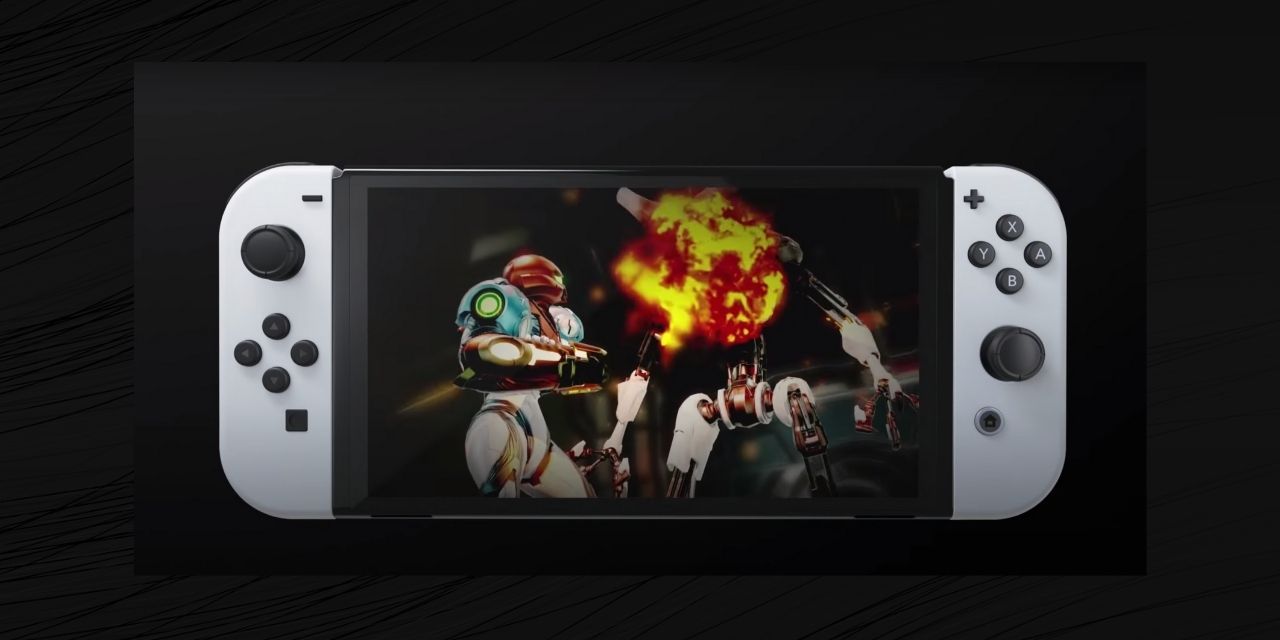The surprise reveal of the Nintendo Switch (OLED Model) earlier this month has left many gamers reaching for their wallets. Whilst it may not be as high-tech as the rumored ‘Nintendo Switch Pro’, the new console does come with a few significant upgrades. It has, of course, been over 4 years since the original’s release.
But what does the ‘Nintendo Switch (OLED Model)’ mean exactly? How does it differ from the original Nintendo Switch and the Nintendo Switch Lite? Here are 10 things you need to know about this brand-new addition to the Nintendo Switch family.
10 The Screen Size Is Bigger
One of the biggest selling points of the Nintendo Switch (OLED Model) is its increased screen size. The hardware itself remains largely similar in size - 4 inches high by 9.5 inches long, compared to the original 4 inches high by 9.4 inches long. This makes the 0.8-inch screen size increase even more noticeable.
There have been rumors that this increased screen size means that the Nintendo Switch (OLED Model) will be able to output in 4k. This is untrue - it has the same resolution (1280x720) as the original Nintendo Switch console in Tabletop mode and Handheld modes.
9 The Difference Between OLED and LCD
Simply put, the new OLED screen is going to be a lot brighter and have more vivid colors than the LCD screen of the original Nintendo Switch. This is great news for accessibility, as well as build quality.
The biggest difference between a Liquid-Crystal Display (LCD) and an Organic Light Emitting Diode (OLED) screen is the different methods by which they light up and display images on the screen. LCD screens use backlights to create a constant light source any time the console is powered. This eveNly lights everything, but it can be power-intensive. On the other hand, OLED screens use self-lit pixels, which means that the screen will only light up when there is an image to display. This leads to higher contrasts between blacks and whites and lower power consumption. The downside is that they are more expensive and are not as bright as the backlit LCD screens.
8 Lan Port Dock
Fans of Nintendo Switch Online have been cursed to suffer from third-party Ethernet extensions since the Nintendo Switch’s release in 2017. These are often flimsy, high latency, and quite expensive.
Some players might love the idea of an official LAN-supported dock is of interest, but the Nintendo Switch (OLED Model) just isn’t doing it for them. If that’s the case, Nintendo has jumped ahead of the resellers and made its new dock available for purchase from the Nintendo Online Store. And yes, it is compatible with the original model. There is no confirmed price just yet, but it is nice that Nintendo has given its fanbase the option to avoid paying full price. Speaking of...
7 How Much is the Nintendo Switch (OLED Model) Going to Cost?
According to the official Nintendo website, The Nintendo Switch (OLED Model) is going to cost $349.99 at the manufacturer’s suggested retail price. However, UK stores such as GAME and Smyths now have pre-orders available at £309.99. Compared to the original Nintendo Switch, the new OLED model costs an additional £30, and £80 more than the handheld Switch Lite.
It is entirely down to personal preference whether this increased price is good value for money. Some gamers who love handheld mode might think that a nicer screen is definitely worth the upgrade, whilst others might not see the point if the hardware is exactly the same. That’s right.
6 No Hardware Updates
A lot of rumors spread online following the release of the Nintendo Switch (OLED Model). Some people thought that this new addition to the Nintendo Switch family would have improved specs on the 2017 release. Some of this was hyped from the previous rumors of a ‘Nintendo Switch Pro’ model releasing. However, all three models have the same specs. The OLED model will not be able to out in 4k; it will be up to 1080p via HDMI in TV mode.
The internal specs are always very similar - both the original and OLED have NVIDIA Custom Tegra processors and similar battery life expectancy. Nintendo told The Verge “Nintendo Switch (OLED model) does not have a new CPU, or more RAM, from previous Nintendo Switch models”.
5 Improved Kick-stand
One hardware problem the original Nintendo Switch faced was its unstable, tiny kick-stand, which rendered Tabletop Mode a precarious endeavor. Many fans have accidentally broken their kick-stands due to the Switch’s unwieldy 0 .66 lbs weighting.
The Nintendo Switch (OLED Model) has a much wider kick-stand, which can expand over the entire back of the console for increased stability. Whilst the Original Model only had one angle, the OLED Model can be adjusted incrementally, providing better support for the optimum angle.
4 Increased Internal Space
Sometimes it’s nice to just pick up a digital game, boot it up and kick back and relax. With its 32GB of internal memory, the original Nintendo Switch often has players scrabbling for external memory cards, trying to find the one with that ONE specific game that is calling to them.
The Nintendo Switch (OLED Model) has doubled its internal storage to 64GB. The Switch’s best-selling game - Mario Kart 8 Deluxe - comes in at around 7 GB. Therefore, it’s easy to see how internal storage can get filled up pretty quickly.
3 Enhanced Audio
One big selling point in Nintendo’s recent reveal was the ‘enhanced audio’ of the Nintendo Switch (OLED Model). There hasn’t, at the time of writing, been any expansion on what this may mean. According to The Verge, Nintendo says that there are no changes to the audio experience when you listen through headphones or your TV’s speakers when using the OLED Switch.
The OLED Model does have two front-firing horizontal stereo onboard speaker holes, but the official Nintendo Technical Specs don’t give us any more information.
2 Bluetooth Capacity?
Whilst the Nintendo Switch is an incredible console, it is missing native support for Bluetooth headphones. The consumer demand for Bluetooth headphone compatibility has only risen in recent years. Leading brands such as Samsung and Apple have even phased out headphone jacks altogether in favor of Bluetooth headphones.
A number of third-party Bluetooth adapters have sprung up since 2017. Due to this, native Bluetooth audio support was at the top of many fans lists for a ‘Switch Pro’. Speaking to The Verge, Nintendo claims that “We have nothing to announce on this topic, but like the Nintendo Switch and Nintendo Switch Lite consoles, Nintendo Switch (OLED model) supports Bluetooth tech for the Joy-Con controllers”. The Nintendo Switch (OLED model) will have a 3.5mm 4-pole stereo headphone jack. It looks like Bluetooth fans should not throw away their adapters just yet.
1 Release Date
The all-important question - when can those who are interested get their hands on it? Mark it in a calendar - the Nintendo Switch (OLED model) releases on October 8th, 2021.
Does this date sound familiar? That could be because it coincides with another very important release - the long-awaited Metroid Dread. Fans of the Metroid series can enjoy the sequel to Metroid Fusion they have been waiting for since 2005 with the beautiful colors and high contrast of a brand new OLED screen.

